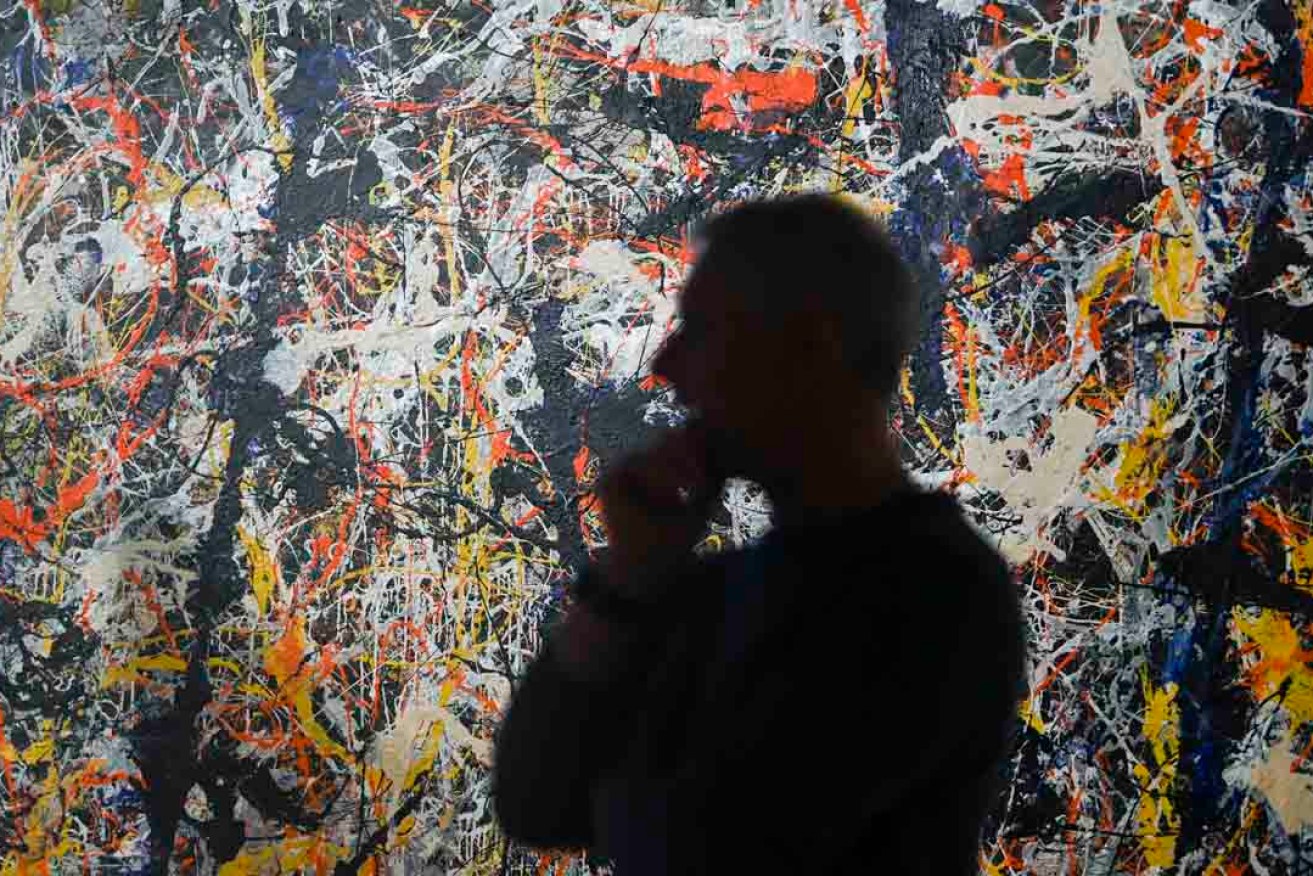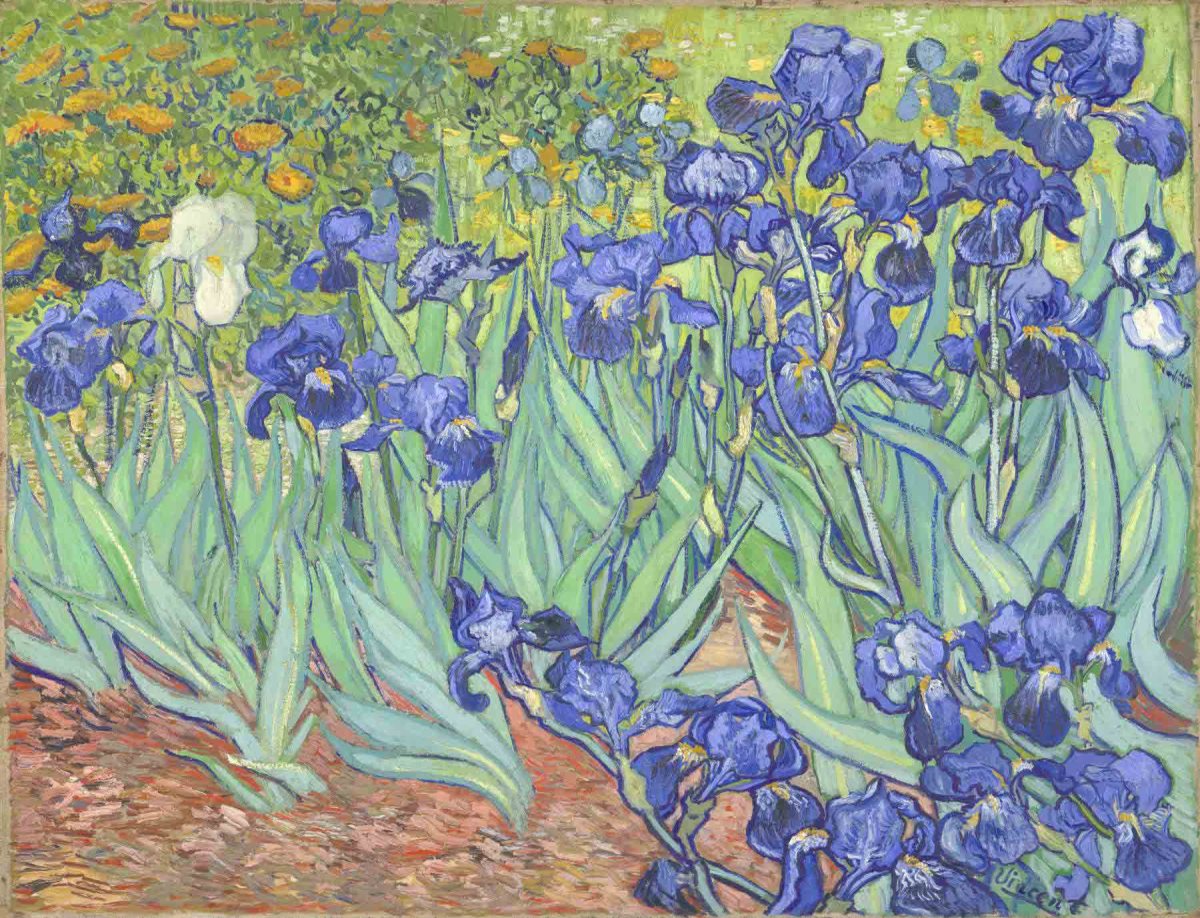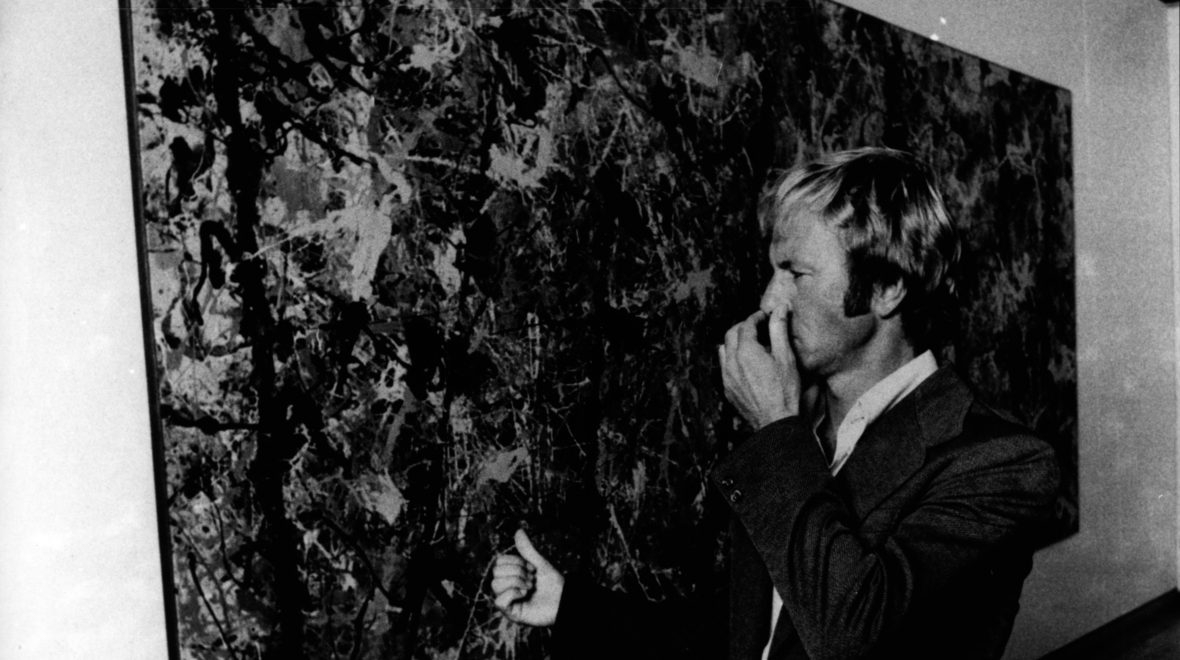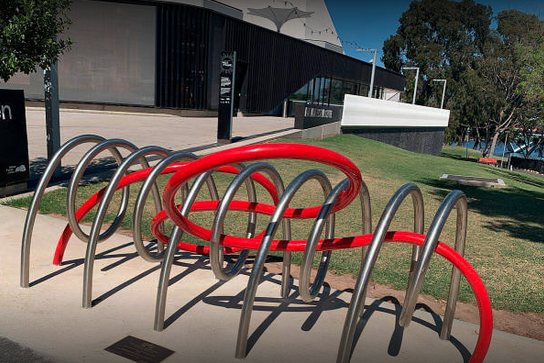Art continues to provoke and befuddle. And that’s a good thing
Controversies and confusion at the height of Adelaide’s arts calendar again show up the double standards applied to culture in Australia.


National Gallery of Australia senior paintings conservator David Wise with 'Blue Poles' by Jackson Pollock during conservation work in 2020. Photo: AAP/Lukas Coch
The first time I saw a Vincent van Gogh painting in real life was in 1989 – exactly 100 years after it had been painted.
Before I viewed it, though, I had to cover a protest at the opening of the exhibition where it was to be displayed – “Irises and Five Masterpieces” at the National Gallery of Australia in Canberra.
No-one was protesting the content of the works of art, but rather the businessman who owned the masterwork and how he was proceeding to make his fortune.
Alan Bond was a shonky Perth businessman – a classic of the genre in 1980s Australia which was stuffed with over-reaching shysters – but at that moment still holding on to his reputation, built in most Australians’ eyes as the backer of Australia’s historic America’s Cup victory.
Bond had bought “Irises” in 1987 for a then-record price for a painting – US$53.9 million.
The protest was about Bond’s business dealings in Chile, where he had grabbed a stake in the national phone company. Chile at the time was ruled by General Augusto Pinochet, who was reviled for his record of bloody human rights abuses (although never brought to account in his lifetime).
For Bond, it was a business opportunity.
The protesters were kept on one side of a rope barrier, while the posh guests filtered into the NGA.
I was taken aback when one of the VIPs, dressed in her finery (in my memory she has a fur wrap, but that could be an embellishment of the mind), strode towards the protesters, leaned over the barrier and kissed a young woman on the cheek. Mother and daughter I presume.
Different days.
Intrigued, I later went to view the unimaginably expensive work and was stunned by it: the colours and the fluidity of the lines made the flowers seem to wave in a gentle breeze before my eyes.
It later turned out that Bond’s “purchase” wasn’t all it appeared.
He bought the painting with a loan from Sotheby’s which he failed to repay: for him, as in much of his public life, his behaviour was about the veneer of prestige.
“Irises” was sold on a few years later.

Irises by Vincent van Gogh is now part of the Getty Museum’s permanent collection. Photo: AAP/The J. Paul Getty Museum
Back in 1973, while Pinochet was leading a military coup against the Allende socialist government, the young Whitlam administration was making headlines concerning another piece of art history.
This one offended the other side of the political divide – and still does.
“Blue Poles”, by American abstract expressionist painter Jackson Pollock, was bought for $1.3 million and attracted immediate outrage from the tabloid press and culture warriors of the day.
A reckless waste of money, the puerile splashings of a drunk, a sign of a decadent and out-of-touch government… the backlash was hard and fast.
The 1952 work, considered a 20th century masterpiece, is now worth an estimated $500 million and a consistent drawcard for the National Gallery of Australia.
But even as its reputation and price grew, “Blue Poles” has been subject to consistent calls for it to be offloaded. In 1993, the Queensland Young Nationals wanted it to be sold to raise $30 million to fund drought relief for farmers.
In 2016, right-wing think tank the IPA wanted to sell “Blue Poles” to the highest bidder because it had become the “Left’s monument” to the “failure” of the Whitlam Government.
Never mind that “Blue Poles” is one of the greatest ever art investments by an Australian government – this inanimate object has spent 50 years provoking this sort of response.
The return on investment – even in publicity, merchandise and tickets sold, let alone the increase in capital value – has been extraordinary.
Beyond that though, this canvas of seemingly random drips and sprays of paint – which coalesce into a remarkable whole – has inspired countless artists, writers and thinkers.
It is part of Australia’s cultural identity. Literally priceless.

Comedian Paul Hogan demonstrates his reaction to Blue Poles. Photo: NGA/Mirror newspaper
All of which brings me to the most recent “controversies” in Adelaide’s art scene which strike me as having some of the myopia evident in the “Blue Poles” debate.
For some, spending on art will always be considered a waste because they can’t see beyond an economic transaction.
If we listened to them, we would have little public art beyond statues of old political and military leaders. There would be no Malls Balls (a risk at the time but now a cherished part of the landscape), pigs, or pigeons; no whimsy or challenge or even just a moment of off-kilter interest to break up the concrete streets.
Our galleries would be one-note places that would never provoke a shock, laugh or sigh.
The latest controversy is almost not worth mentioning: a colourful and playful take on a bike rack outside the Festival Centre that some people seem to think should be repurposed as an actual bike rack.
This whimsical and relatively inexpensive piece of art adds humour, light and movement to its place outside the Festival Centre and, aptly, the storm in the teacup has provoked discussion about how we provide for cyclists on our streets. What’s not to love?

Karl Meyer’s playful “Motion”, part of the Adelaide Bike Art Trail. Photo: City of Adelaide
However, when the escalating cost of a bamboo plate of butter chicken at the Fringe is judged more of a scandal than the impoverishment of artists, it shows up that thread in Australian culture that can’t comprehend the many meanings and purposes of art and its central place in our lives.
It’s no wonder Pollock’s painting, after all these years, remains so annoying to some people and such a delight to others.
I also think of that presumed mother and daughter on opposite sides of the VIP line, and wonder at the complex interplay of art, politics, love and money, and how it has always been so.
Vincent van Gogh painted “Irises” within days of being admitted to the psychiatric hospital in Saint-Rémy. This painting, he famously reflected, was a “lightning rod” for his illness – through this work, he believed he could keep his troubles at bay.
It was one of the first paintings of his to be sold – but only after his death.
His revolutionary work wasn’t widely seen for what it was while he was alive. Today it resists being reduced to merely decorative, despite the worst attempts of merchandisers and showmen.
You can see “Irises” today at the J. Paul Getty Museum in Los Angeles.
It’s worth a lot of money, obviously, but its primary power isn’t its economic value – it never was.
It’s about those weaving, waving, melancholy, beautiful blossoms, and the moment of pause it gave its creator, and countless more people in the years since.
Notes on Adelaide is a weekly column reflecting on the city, its strengths and its foibles. You can read more Notes on Adelaide in SALIFE’s print editions.




